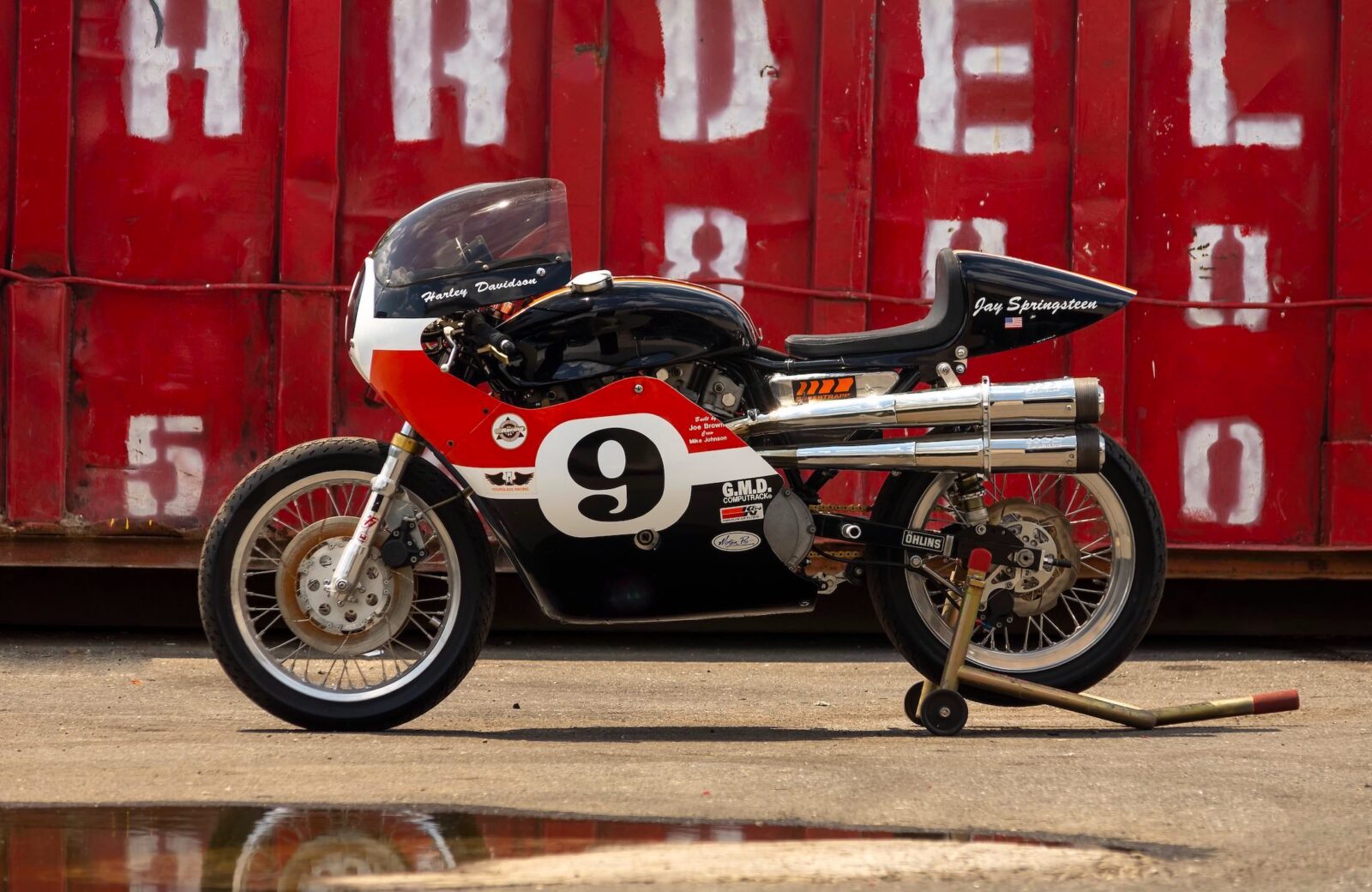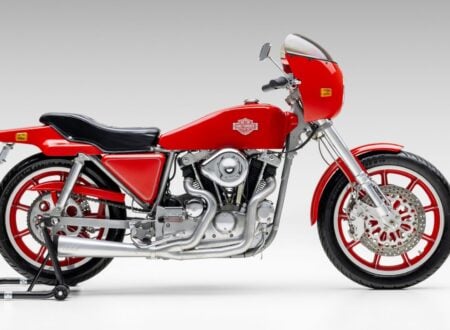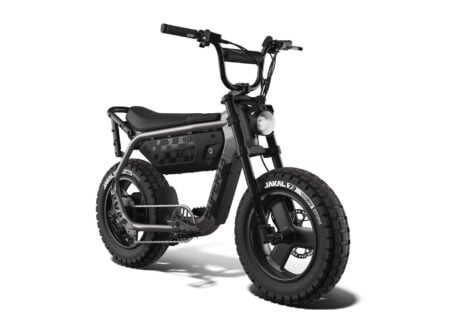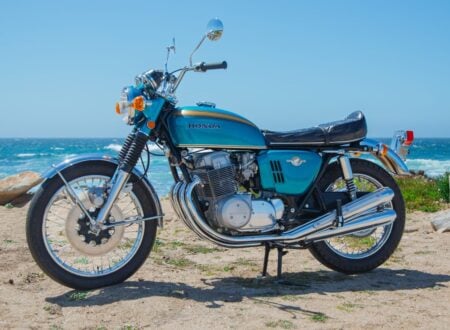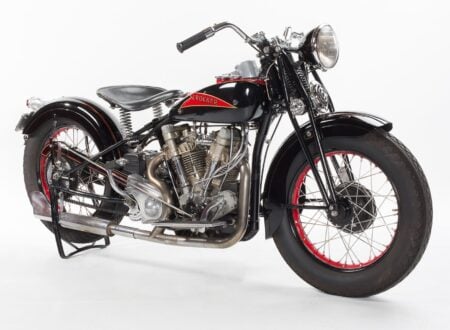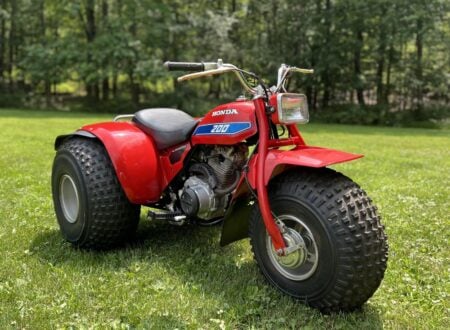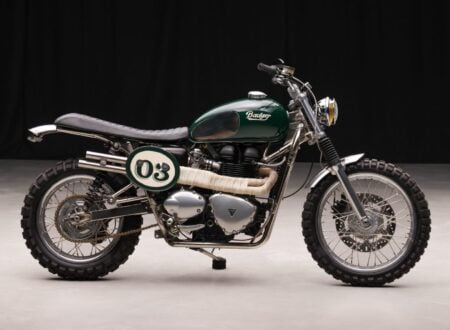The Harley-Davidson XRTT is remembered today as one of the most beautiful machines ever conceived by the Milwaukee-based motorcycle manufacturer. Underneath that handsome fairing lies the same engine and many of the same parts used on the wildly successful XR750 flat track racer.
The early days of the XRTT program were beset with difficulty, Harley-Davidson was in deep financial distress and there was very little money available for the development of new models.
The first versions of the XRTT with their iron engines were nicknamed “Waffle Irons” due to their propensity for overheating, reliability was a major issue, and few could have guessed that just two years later the XRTT would be in England winning races and setting lap records against the best in the world.
Fast Facts – The Harley-Davidson XRTT
✱ The Harley-Davidson XRTT was developed as the road racing sibling to the dominant XR750 flat track racer.
✱ Although relatively primitive by the standards of the data, with its simple pushrods and two valves per cylinder, the XRTT enjoyed a number of David vs Goliath moments against much more advanced foreign machines.
✱ The styling of the XRTT is often pointed to as a high-water mark for Harley, with its beautiful fuel tanks and seat, and its elegant aerodynamic full fairing.
✱ Relatively few original examples of the XRTT were made, and today they’re highly sought after. A small number of custom-built examples have been created using spare parts with careful attention to detail.
The Custom-Built Harley-Davidson XRTT
The Harley-Davidson XRTT you see here was built not by the factory but by Keith Campbell’s Hourglass Racing using parts that were bought, bartered, and fabricated. It’s one of a few XRTTs to be built from parts after production ended, and this one has had racing legends including Tim Joyce and AMA National Champion and Hall of Famer Jay Springsteen in the saddle.
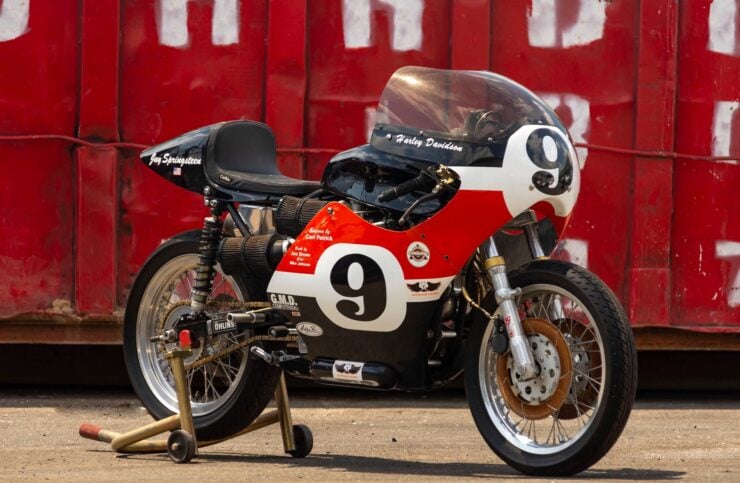
Above Image: The XRTT is famous for its good-looks, under that fairing lies the same engine and many of the same parts used in the XR750 flat track racer.
There can be no doubt that the greatest single event in the history of the XRTT was the remarkable showing at the 1972 Trans-Atlantic Match Race series, a six race event held annually in the United Kingdom.
Few held much hope that the problematic XRTT would consistently finish races let alone be a contender for wins, so it came as quite a shock to the locals when American riders Cal Rayborn and Ray Pickrell were quicker than many of the homegrown machines.
By the end of the series Cal Rayborn had won three of the six races and he set a new lap record at Brands Hatch after memorizing the circuit from a simple line drawing on a cocktail napkin. The XRTT would never become as successful as its flat tracker sibling, the XR750, however it holds a special place in Harley history.
When Keith Campbell and his team at Hourglass Racing set out to build a collection of three XRTTs they searched the country for parts and called every supplier they could find. In the end they acquired enough original parts to complete the three bikes to a high degree of accuracy.
Due to the fact that these three bikes aren’t original they have less historic value (and as a result less monetary value) than their factory-built forebears. As a result of this the Hourglass Racing bikes are perfect for vintage competition, as accidents won’t result in the potential destruction of a rare race bike.
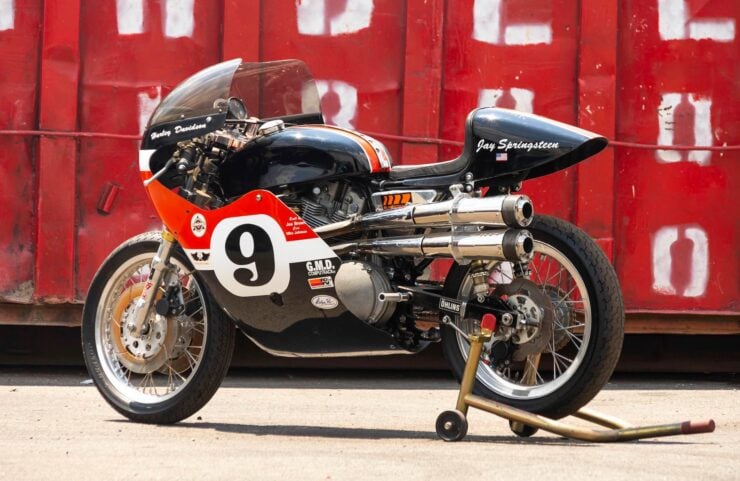
Above Image: This bike wasn’t built by the factory, it was made later by Keith Campbell’s Hourglass Racing using many original parts.
Since its completion the bike you see here has been racing on tracks across the country in AHRMA and WERA races with pilots including Tim Joyce and AMA National Champion and Hall of Famer Jay Springsteen in the hot seat. Parade laps have also been completed with Mert Lawwill, Mark Brelsford, and Chris Carr riding.
The highlight of the bike’s history to date was a win in 2004 at Daytona with Jay Springsteen riding. The engine currently fitted is a crate motor bought new from Harley and built by XR specialist Carl Patrick of Ohio and it is reported to have done practice sessions only, no racing.
Since it was bought from Hourglass Racing in 2014 this bike has been on static display, it’s now being offered for sale and it would make an ideal machine for entries into the world of vintage motorcycle racing including events like the Barber Vintage Weekend.
If you’d like to read more about this bike or register to bid you can click here to visit the listing on Bonhams. It has a price guide of $45,000 – $55,000 USD and it’s being sold in Los Angeles.

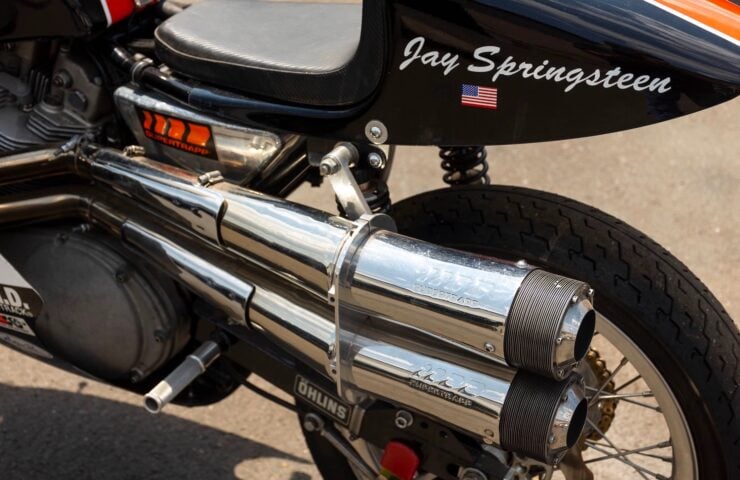
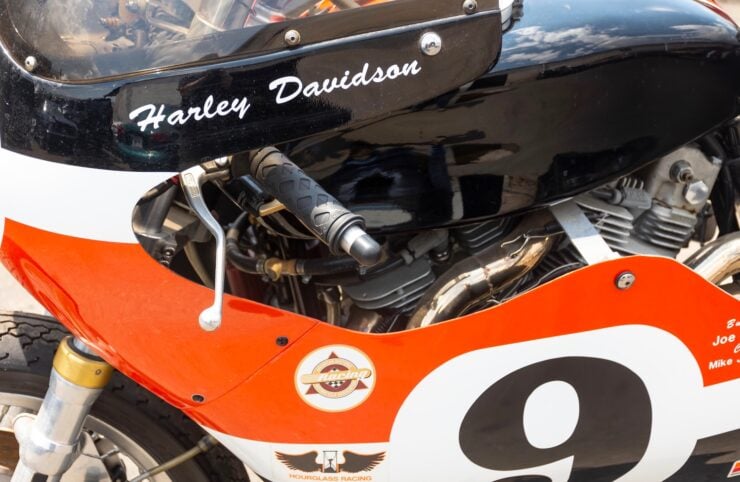

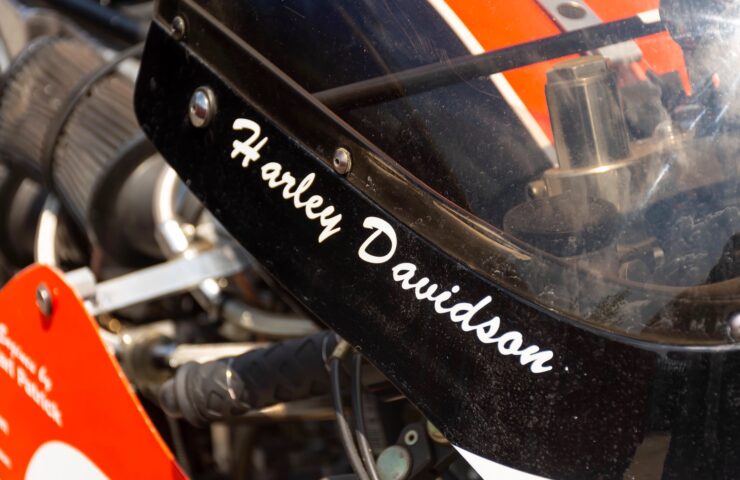
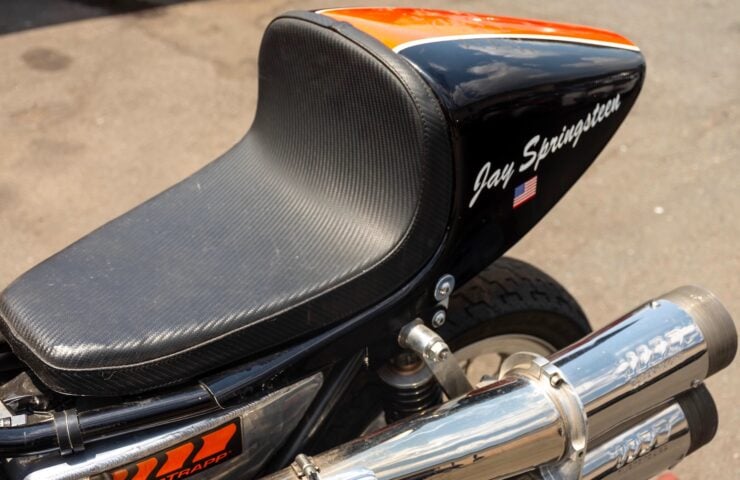


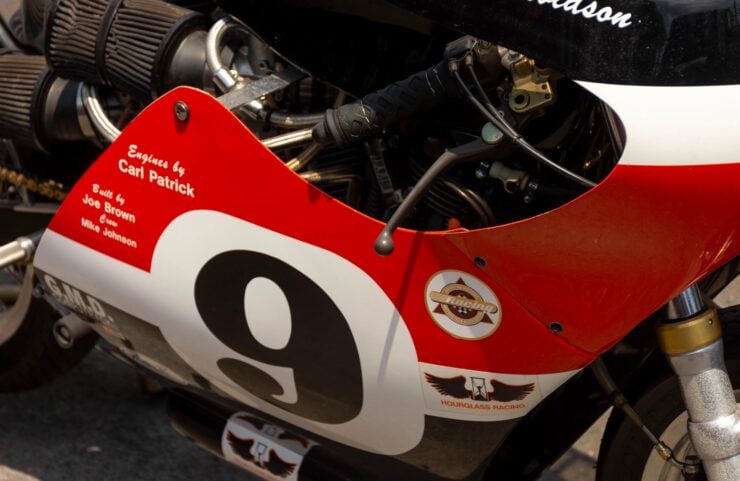
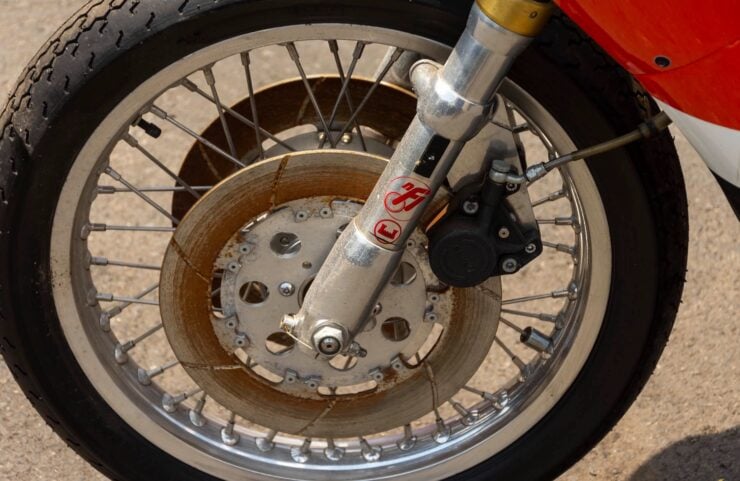
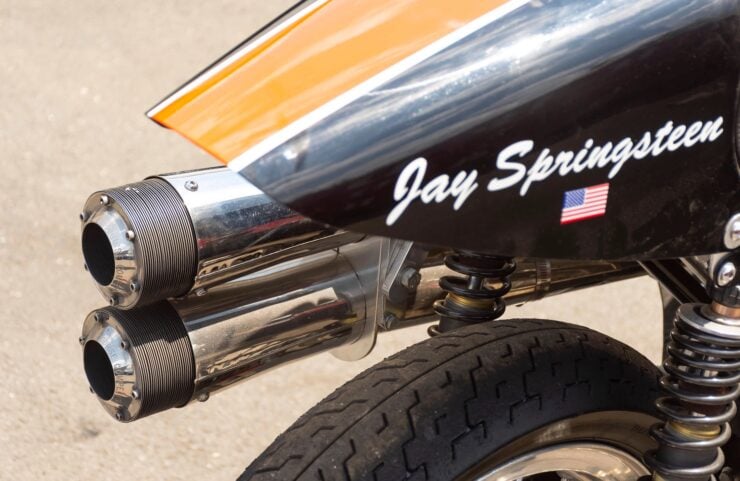
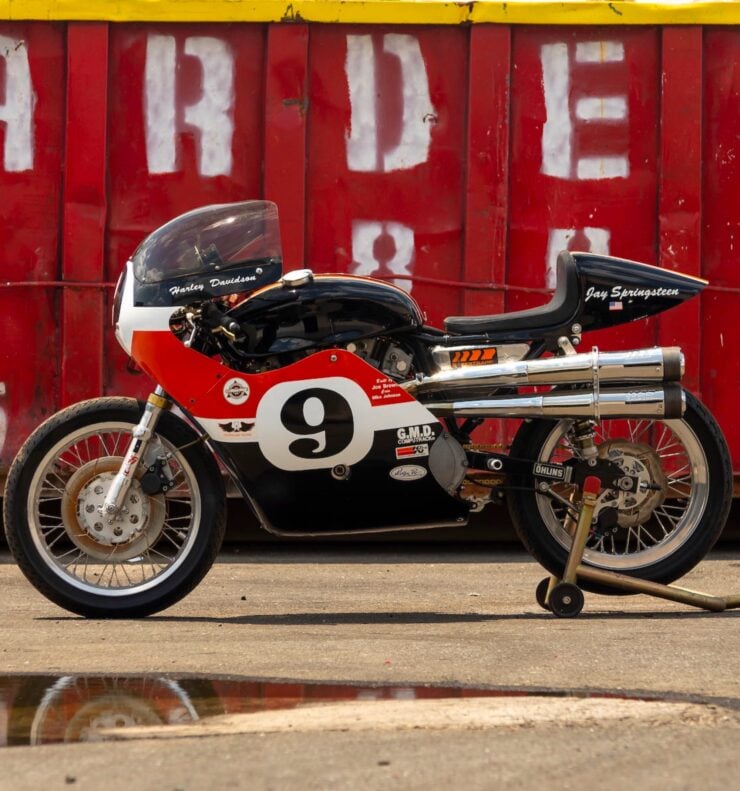
Images courtesy of Bonhams

